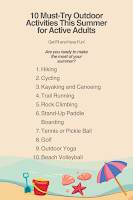The Benefits of Cat Ownership: Who Really Owns Whom?
When we think about bringing a cat into our home, the common notion is that we become the proud "owners" of a charming, sometimes aloof, feline companion. However, anyone who has ever lived with a cat will quickly come to realize that this relationship is far more nuanced than a simple owner-pet dynamic. In many ways, cats own us more than we own them! From their ability to captivate our hearts to the many physical and emotional health benefits they provide, living with a cat is a unique and rewarding experience. Let’s explore the benefits of cat ownership and the subtle ways these independent creatures take charge of our homes and lives.
1. Emotional Support and Stress Relief
One of the greatest benefits of having a cat is the emotional support they offer. After a long day, there’s nothing quite like the comforting presence of a purring cat nestled on your lap. Research has shown that interacting with cats can reduce levels of cortisol, the stress hormone, while also increasing the release of oxytocin, the "love hormone" that promotes feelings of calm and relaxation.
The sound of a cat’s purr is particularly soothing. This rhythmic, gentle vibration has been linked to lower blood pressure, reduced anxiety, and even faster healing rates in humans. Whether it’s gently stroking their soft fur or simply observing their playful antics, cats have an uncanny ability to lift our spirits. And while it may seem like they choose to give us attention on their own terms, it’s clear that in those quiet moments of bonding, cats have an extraordinary impact on our emotional well-being.
2. Promoting Mental Health and Mindfulness
Cats are often considered zen masters of the animal kingdom, and for good reason. Their behavior often mirrors the principles of mindfulness—being fully present in the moment, without judgment. Watching a cat basking in a sunbeam, stretch lazily after a nap, or chase after a toy with a single-minded focus can remind us to slow down and savor life's simple pleasures.
For individuals who struggle with mental health challenges such as depression or anxiety, a cat can be a grounding force. The routine of caring for a cat, including feeding, grooming, and playtime, provides a sense of purpose and stability. Cats offer companionship without overwhelming demands, making them ideal for people who may feel overwhelmed by more social or high-energy pets. Their quiet yet steadfast presence encourages us to stay in the moment, reduce overthinking, and simply enjoy their company.
3. Physical Health Benefits
It’s no secret that pets, in general, can have a positive impact on physical health, and cats are no exception. Studies have shown that cat owners tend to have lower risks of heart attacks and cardiovascular diseases. This can be attributed to the reduction in stress levels that comes with having a cat. The simple act of petting a cat has been shown to lower heart rates, helping to maintain healthy blood pressure.
Additionally, while cats may not need to be walked like dogs, they still encourage physical activity through interactive play. Chasing a laser pointer, dangling a string, or tossing a ball can get both you and your cat moving. Cats are also known for their bursts of energy, often racing around the house in spontaneous "zoomies." These playful moments create opportunities for light exercise and laughter, further boosting mood and fitness.
4. Fostering Responsibility and Routine
Owning a cat teaches responsibility in ways that are rewarding and enriching. Cats may seem low-maintenance compared to other pets, but they still require regular feeding, litter box cleaning, grooming, and mental stimulation. Caring for a cat can provide structure to your day and establish a sense of routine. This is particularly beneficial for children or individuals who benefit from having daily responsibilities.
What’s more, cats are creatures of habit. They love routine and will quickly remind you (often vocally!) if you’re late for feeding time or forget to fill their water bowl. By keeping us on our toes, cats gently train us to be more organized and attentive, all while asserting their role as the true rulers of the household.
5. Companionship Without Being Overbearing
One of the unique joys of living with a cat is their ability to provide companionship without being overly demanding. Cats are independent by nature, which makes them ideal companions for people who enjoy personal space but also appreciate affectionate moments. Unlike dogs that require frequent walks and attention, cats are happy to lounge around, entertain themselves, and simply be in the same room as you without constant interaction.
However, when a cat does choose to curl up beside you, purr contentedly, or give a gentle head bump, it feels all the more special. It’s a relationship built on mutual respect. They are there when you need them, but they also value their independence, teaching us to respect boundaries and appreciate solitude. In this way, cats show us how to balance closeness with autonomy—another life lesson from our feline friends.
6. The Myth of Ownership: Cats Own Us!
Despite the conventional label of "ownership," anyone who has lived with a cat knows the truth: cats own us, not the other way around. From the way they casually take over the best spots in the house (your favorite chair, the sunny windowsill) to the way they demand attention on their schedule, cats have a remarkable ability to manipulate their human companions.
They decide when and where we are allowed to give them affection, and they know how to train us to cater to their needs. Whether it’s a well-timed meow for a midnight snack or the subtle way they weave between our legs to remind us it’s dinner time, cats have mastered the art of getting what they want. In return, we gladly serve them, reveling in the joy they bring into our lives.
A Mutually Rewarding Relationship
While the term "ownership" suggests control, living with a cat is more about partnership—one where cats hold more influence than we often realize. They bring immense emotional and physical benefits, from reducing stress to providing companionship, all while allowing us the privilege of caring for them.
So, while we might think we own our cats, the truth is they own us. And for those lucky enough to share their lives with these fascinating creatures, it’s a role we gladly embrace. After all, there’s no greater reward than being chosen by a cat to be part of their world.











